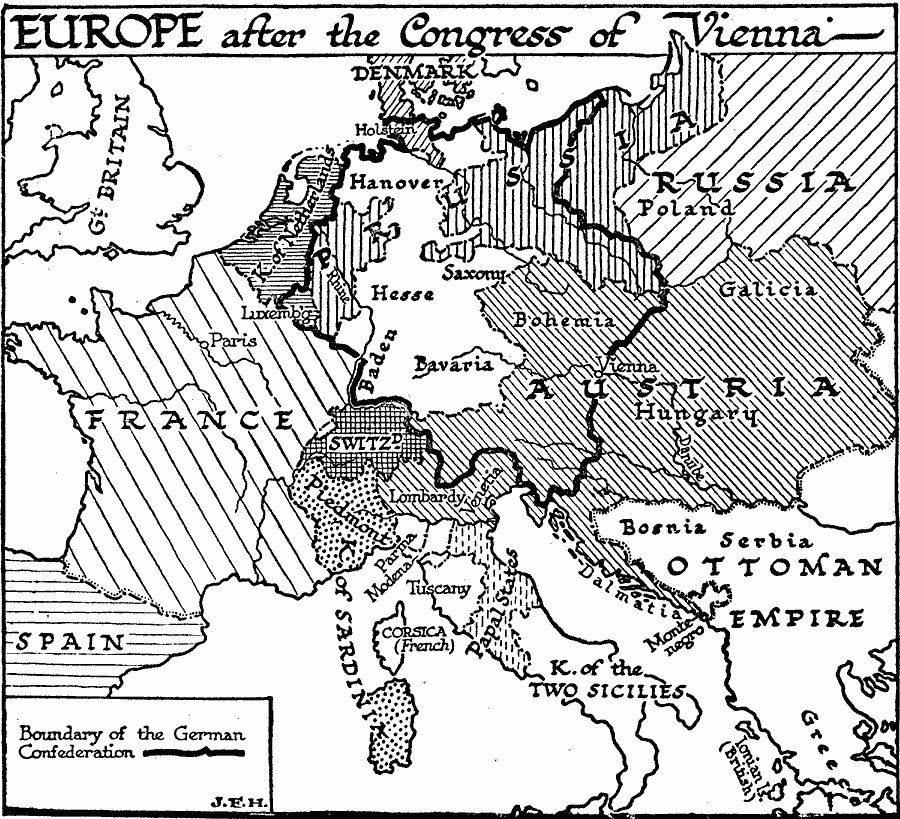After Napoleon's abdication in April 1814, representatives of all the states of Europe met in Vienna in order to decide what to do now that the Napoleonic threat had disappeared.
They had three priorities:
-To reduce the size of France to its frontiers before Napoleon's invasion.
-To ensure that France could never again be a threat to the rest of Europe.
-To recompense those countries that had been “anti-Napoleon” and punish those that had been “pro-Napoleon”.
The attendants to this meeting in Vienna were:
a) Austria, Prussia, Russia and Britain (the most important)
b) France, Spain, Portugal and Sweden
c) Bavaria, Hanover, Denmark and Savoy (minor states)
The map of Europe was modified after the Congress in this way (click on these words to enlarge the map below):
There is another map (in colour and clearer) of the territorial distribution after Congress of Vienna on the following link you can also use.
Major failings of the Congress of Vienna were:
a) The redrawing of the map of Europe took no account of the wishes of the ordinary people, with regard to the nationalist feeling which had appeared during the Napoleonic military campaigns and had been fatal to him. Millions of people in Europe refused to accept the imposition of foreign rulers and, as a result, nationalist revolutions broke out in many regions after 1820.
b) After the dismantling of Napoleon's empire, Russia, Austria and Prussia wanted to reinstall monarchies of the Ancien Régime. This led to more revolts and revolutions since Napoleon had introduced liberal constitutions which made a profound impact on the people who lived in the regions the French Emperor had conquered.
II. The Holly Alliance
It was a coalition of different states which was created in 1815 and whose members were Russia, Austria and Prussia .The monarchs of these three nations wanted to install the Christian values of charity and peace in European political life, but in practice what they were chasing was to band together in order to prevent revolutionary influence (especially from the French Revolution) from entering their territories. Except for Great Britain, the Vatican and the Ottoman Empire, all other European nations joined.
Activities:
- Which type of government did the founders of the Holly Alliance have? Why didn't Great Britain join forces with these nations?
- Remember what we have seen in class about liberalism. Describe the political and economical features this term had at the time you are studying. Did the Enlightenment have any influence on liberalism? Why?
- Compare the 1812 map and the map for the period after the Congress of Vienna. Which changes can you observe?
- What's the model for the liberal constitutions Napoleon introduced?
- Comment on the following sentence from a History textbook :“The European Restoration meant an ideological conflict whose consequences echoed throughout the nineteenth century (...)”.
Focus on these concepts: European Restoration, ideological conflict and consequences

No hay comentarios:
Publicar un comentario